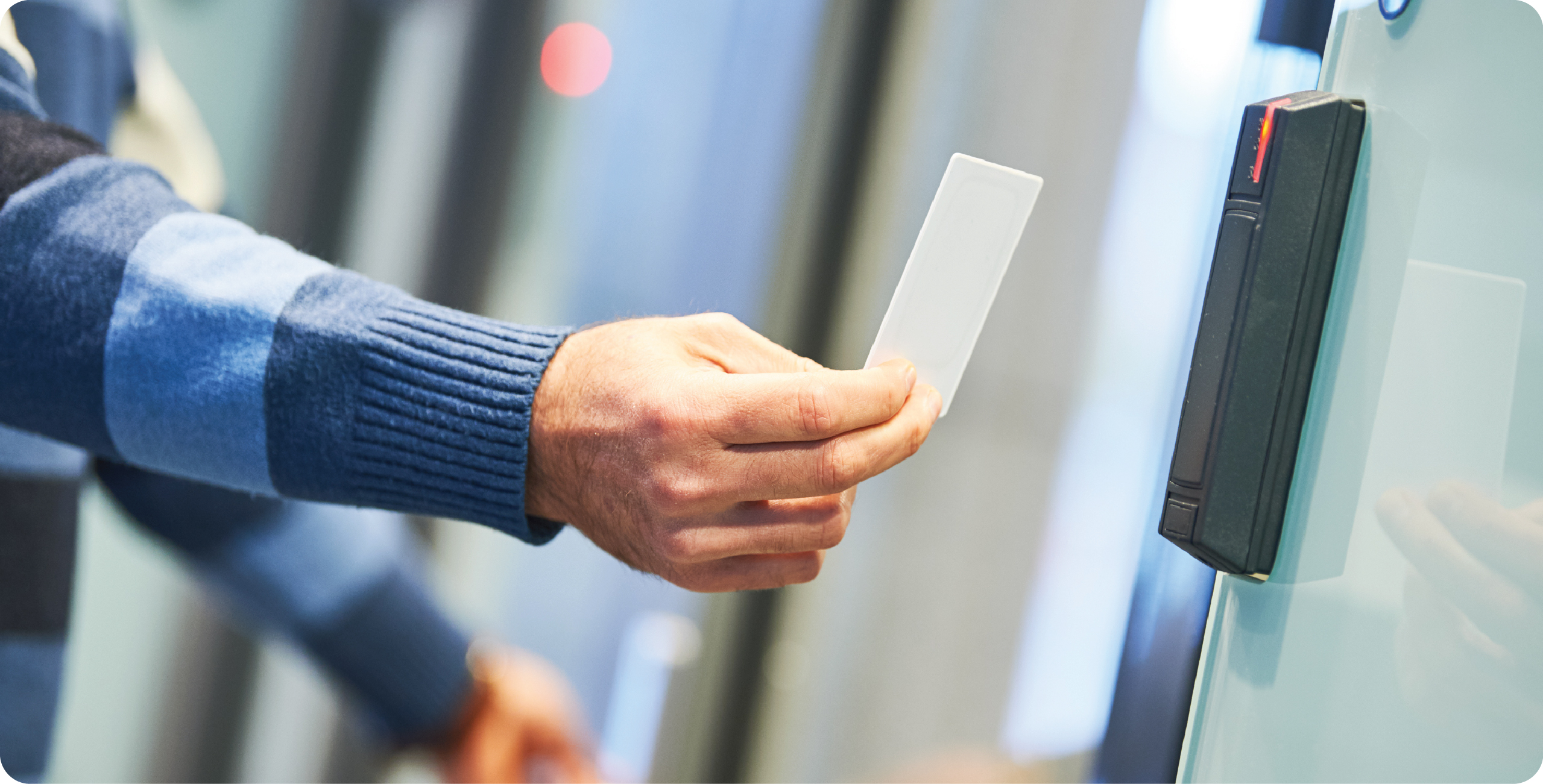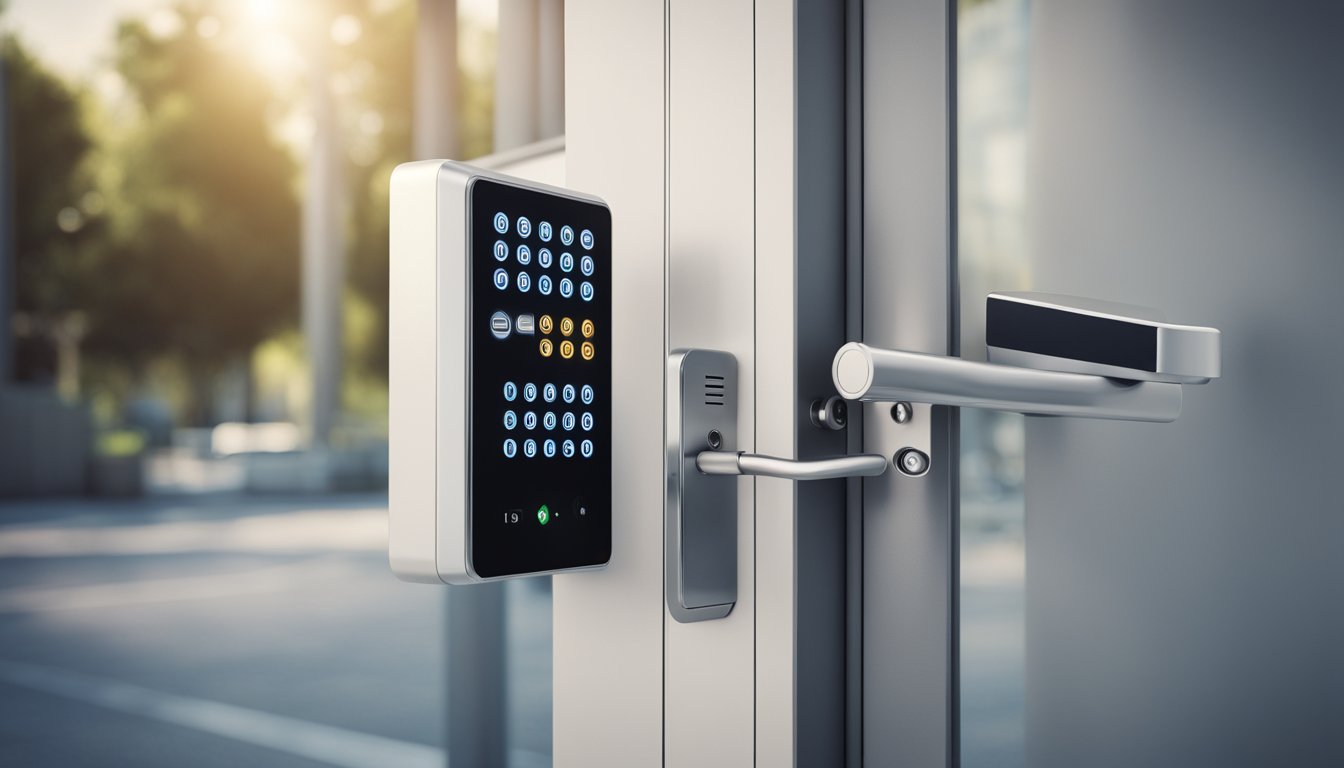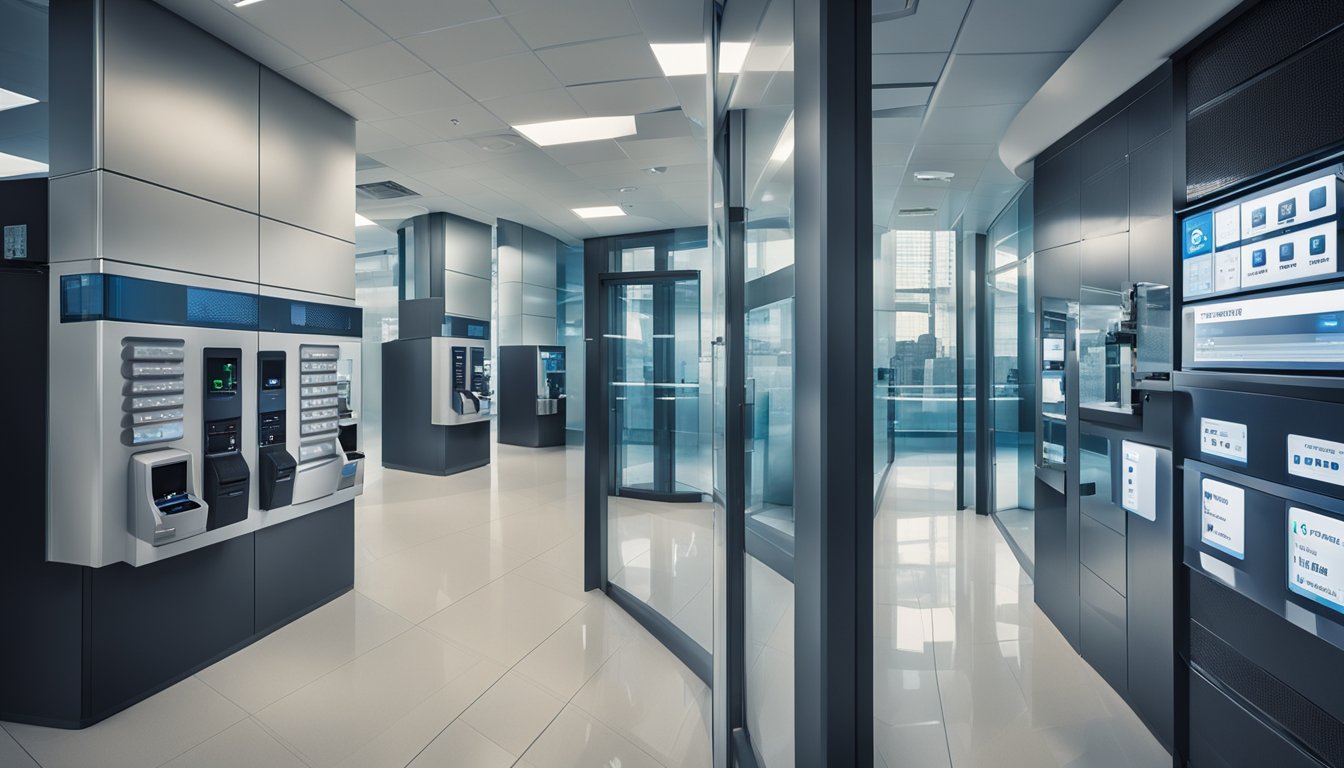
An effective access control system serves as the cornerstone for the security of a business, ensuring that only authorised individuals have entry to certain areas or information. It’s a crucial component of a company’s overall security strategy, mitigating risks associated with unauthorised access which can lead to theft, data breaches, and potential harm to personnel or assets. As technology evolves and threats become more sophisticated, the importance of selecting the right access control system has never been more paramount.
To choose the right access control system for an organisation, one must assess the specific needs of their business. This involves considering the size of the facility, the number of access points, and the level of security required. Detailed planning and a clear understanding of the operational requirements will lead to a tailored solution that not only heightens security but also aligns with the company’s workflow.
Integration capabilities are a critical aspect to look out for in an access control system. A system that seamlessly integrates with other security systems such as video surveillance, intrusion detection, and alarm systems can enhance the overall security infrastructure. This unification not only simplifies the management and monitoring procedures but also strengthens a business’s response to incidents, ensuring comprehensive coverage and control.
When considering an access control system, it’s imperative to assess the security needs of the premises. These systems offer a means to manage entry into a space, securing physical locations such as offices, apartments, and critical infrastructure.
In the context of construction sites, which are particularly vulnerable to theft and unauthorised access, a robust construction site security system is essential. Such systems often incorporate specialised access control measures designed to withstand harsh outdoor conditions while providing stringent security.
Access control systems can range from basic, like keypad entry, to advanced biometric solutions. A fundamental step is evaluating the number and type of entry points that require securing. Doors are common entries; however, turnstiles, gates, and other barriers may also be integral.
Typically, the system includes:
Types of access control:
A solid physical security plan must incorporate these systems effectively. Organisations should take into account their unique requirements, considering factors like the nature of their operations, the sensitivity of the areas to be protected, and the flow of employees and visitors through the space. The goal is to ensure a secure yet accessible environment for all legitimate users.

When selecting an access control system, understanding the various types is critical to match the technology to one’s specific needs. Here are the primary systems:
In the context of scalability and management, access control systems can also be into:
Selection of an access control system should consider the organisation’s size, the flexibility needed, and the capacity for future growth. Each type presents its own set of features that can be leveraged to bolster an entity’s security architecture effectively.
Access control systems are integral for securing entry points and ensuring that only authorised individuals can access certain areas. The core components play distinct roles in the overall functionality of these systems.
Credentials form the basis of the identification process, ranging from traditional keys to modern smart cards and mobile access. They work in tandem with card readers, which authenticate the provided credentials.
Access control software plays a pivotal role, enabling administrators to define, manage, and track access permissions. It often operates on a server, where all data and configurations are centrally stored.
Furthermore, biometrics provide an advanced layer of security through unique physical characteristics, such as fingerprints or facial recognition.
By integrating these key elements, organisations can construct a reliable access control system tailored to their specific security needs.
Entry devices refer to the physical equipment that keeps your entry points secured until the correct credentials are provided.
There are numerous entry devices available, each with distinct functions. Here are some of the most common ones:
When selecting the entry devices for your business, it’s essential to strike a balance between ease of management and the desired level of security. This should also be taken into account when developing a cybersecurity protection strategy.
It’s worth noting that understanding the perks and functionalities of alarm systems can also influence the choice of entry devices, ensuring that the selected components not only control access but also effectively communicate with alarm systems to promptly alert the necessary parties in case of security breaches.

When selecting an access control system, it is imperative to assess the specific security needs of a business. This involves a comprehensive evaluation of the facility to determine the number and nature of access points that require monitoring and control. Factors such as the size of the premises and the typical flow of visitors should inform the complexity and scalability of the system.
An essential element of this assessment is reviewing existing security policies and determining how an access control system can align with these policies to enhance overall security. For instance, businesses may need systems that can integrate with visitor management technologies, allowing for streamlined entry processes that don’t compromise security.
In light of COVID-19, considerations might include the requirement for touchless entry points to minimise physical contact and potential contamination. An effective access control system should support these health guidelines without compromising security measures.
Moreover, the choice of an access control system needs to reflect both external and internal security threats. For external threats, the system should be robust enough to deter and detect unauthorised access by potential intruders. Internally, it must protect against risks such as tailgating, misuse of identification, and other potential breaches that could stem from staff or legitimate visitors alike.
Ultimately, the chosen system must seamlessly integrate into the company’s operations, supporting the security infrastructure without creating undue complexity or hindering the everyday activities of authorised personnel.
When selecting an access control system, budgeting appropriately is essential. Initial acquisition costs for hardware such as locks, card readers, and cameras can vary significantly, depending on the technology’s sophistication.
Installation costs should not be overlooked. They include both the physical installation of hardware and the integration of the system into existing infrastructure. Businesses must ensure that their budget accounts for these initial expenditures.
Moreover, long-term maintenance costs play a crucial role. Regular maintenance ensures the system operates effectively, but this incurs ongoing expenses. As part of maintenance, periodic updates or upgrades may be necessary to keep the system secure against new threats or compatible with modern technologies.
Here’s a summary of potential costs to consider:
A robust solution should align with the business’s overall security strategy while being mindful of the budget. Companies must evaluate the total cost of ownership, which includes not only purchase and installation but also the costs associated with keeping the system up-to-date and functioning over its lifespan.
When selecting an access control system, it is vital to consider the installation costs and the expertise of the vendor. Installation costs vary depending on system complexity and infrastructure readiness. A trustworthy vendor not only offers competitive pricing but also comprehensive support and training services post-installation.
Training for staff is imperative to ensure smooth operation and is frequently provided by the vendor. It should cover system management, troubleshooting, and regular maintenance. Adequate training minimises the risk of system misuse and allows for efficient problem resolution.
Reliability is paramount in access control systems. The implementation process should include rigorous testing to verify system integrity and performance. Vendors often provide guarantees of reliability, with many offering ongoing support contracts for additional peace of mind.
| Consideration | Details |
| Installation Costs | Varied based on system complexity; often outlined in vendor’s proposal |
| Vendor | Responsible for installation, should be reputable and experienced |
| Support | Includes troubleshooting and maintenance; often under service contract |
| Training | Essential for effective system use; provided by vendor |
| Reliability | Verified during implementation; should be supported by vendor guarantees |
The company should assess the scalability of the system to ensure it can grow with their needs. A discussion with the chosen vendor about future proofing the access control system can save significant costs and disruption in the long term.
When seeking an advanced access control system, a variety of sophisticated features ensure heightened security control and efficiency. Biometric systems are at the forefront, utilising unique physical characteristics such as fingerprints, iris patterns, or facial recognition to allow or deny access.
Smart locks have significantly transformed access control. They enable remote management of entry points and can be integrated with other security systems for comprehensive coverage. Smart locks often feature keyless entry, using smartphones or special key fobs for authentication, which streamlines the access process.
In terms of access control policies, these systems can be programmed with complex parameters to meet specific security needs. They can dictate who can access certain areas at particular times, thus providing a meticulous level of control. Policies can also be quickly updated in response to changing security requirements.
Efficiency is a key benefit – with advanced systems, admins can monitor and alter permissions without physical alterations to the locks or reissuing keys. Audit trails are another essential feature, providing a log of every entry and exit, which is crucial for post-event analysis and ongoing security management.
The choice of readers is another consideration. These range from numerical keypads and card readers to more advanced biometric readers. Each reader type offers different security levels and has implications for user convenience and overall system security.
An integrated approach to security control ensures an access control system not only prevents unauthorised entry but also works seamlessly with surveillance, alarm systems, and other pre-existing security measures to create a robust security infrastructure.
Managing an access control system effectively ensures reliability and security within an organisation. Here are key considerations for overseeing such systems:
Regular Updates: Ensuring the software and firmware components are up-to-date is crucial. These updates can provide enhancements in security features and protocols, reflecting the latest in cybersecurity defense against potential intruders.
Ongoing Maintenance: Systems require routine checks to maintain optimum performance. This includes inspecting hardware components like readers, locks, and other physical barriers, as well as reviewing system logs for any anomalies or patterns that may indicate a security breach.
Effective management also anticipates the lifecycle of the access control system, planning for eventual upgrades or replacements in alignment with emerging technologies and organisational growth. By prioritising these aspects of management, one ensures a robust defence against both internal and external security challenges.
If you already have an alarm system, commercial CCTV surveillance cameras, or a Comelit Video Entry door system, it’s advisable to select an access control system that can integrate with your existing security measures, such as Paxton. A single, integrated system is much easier to manage compared to multiple disconnected systems, especially for small businesses with limited time and staff.
Even if you don’t have CCTV installed currently, it’s worth considering investing in it later. Make sure that your access control system is compatible with other systems to ensure seamless integration for potential future use.
When installing an access control system, data management is an important consideration. All user rights and security records need to be stored somewhere. If you have a robust IT network in place, an on-premises system may be the best option as it gives you more control over its management.
For businesses that lack resources or expertise to handle in-house systems, there are many options available for a cloud-based access control system. With this system, all your data is stored on remote servers and managed by a professional cybersecurity firm. You can access and manage your system from any device with an internet connection. Cloud-based CCTV solutions are also available. Cloud-based systems offer unparalleled convenience, making them ideal for businesses without the resources or expertise to handle technical maintenance.
Choose a system that can accommodate the expansion of your business. If you anticipate future growth, ensure that your system is capable of handling it. Otherwise, you may have to repeat the entire selection process. Additionally, you may find this guide on How to Choose an Intercom System helpful. Our facility manager’s checklist may also be useful.
If you’re interested in learning more about access control systems for your business, contact our experts today. Our team will be happy to provide free advice and a complimentary estimate based on your needs.